Marks’ Basic Medical Biochemistry A Clinical Approach 6th Lieberman Peet Test Bank
Overview
Marks’ Basic Medical Biochemistry A Clinical Approach 6th Lieberman Peet Test Bank provides a comprehensive understanding of biochemistry with a strong emphasis on clinical correlations, making complex biochemical concepts accessible and relevant to medical practice. The text integrates clinical case studies and diagnostic insights throughout, helping students and professionals apply biochemical knowledge to real-world medical scenarios.Pass your classes with ease with this great study source!
- 1 Metabolic Fuels and Dietary Components
- I. Dietary Fuels
- A. Carbohydrates
- B. Proteins
- C. Fats
- D. Alcohol
- II. Body Fuel Stores
- A. Fat
- B. Glycogen
- C. Protein
- III. Daily Energy Expenditure
- A. Basal Metabolic Rate
- B. Physical Activity
- C. Diet-Induced Thermogenesis
- D. Calculations of Daily Energy Expenditure
- E. Healthy Body Weight
- F. Weight Gain and Loss
- IV. Dietary Requirements
- A. Carbohydrates
- B. Essential Fatty Acids
- C. Protein
- D. Vitamins
- E. Minerals
- F. Water
- V. Dietary Guidelines
- A. General Recommendations
- B. Carbohydrates
- C. Fats
- D. Proteins
- E. Alcohol
- F. Vitamins and Minerals
- VI. Xenobiotics
- Chapter 1: Review Questions
- 2 The Fed or Absorptive State
- I. Digestion and Absorption
- A. Carbohydrates
- B. Proteins
- C. Fats
- II. Changes in Hormone Levels after a Meal
- III. Fate of Glucose
- A. Conversion to Glycogen, Triacylglycerols, and CO2 in the Liver
- B. Glucose Metabolism in Other Tissues
- IV. Lipoproteins
- V. Amino Acids
- VI. Summary of the Fed (Absorptive) State
- Chapter 2: Review Questions
- 3 Fasting
- I. The Fasting State
- A. Blood Glucose and the Role of the Liver during Fasting
- B. Role of Adipose Tissue during Fasting
- C. Summary of the Metabolic Changes during a Brief Fast
- II. Metabolic Changes during Prolonged Fasting
- A. Role of Liver during Prolonged Fasting
- B. Role of Adipose Tissue during Prolonged Fasting
- Chapter 3: Review Questions
- Section II: Chemical and Biologic Foundations of Biochemistry
- 4 Water, Acids, Bases, and Buffers
- I. Water
- A. Fluid Compartments in the Body
- B. Hydrogen Bonds in Water
- C. Electrolytes
- D. Osmolality and Water Movement
- II. Acids and Bases
- A. The pH of Water
- B. Strong and Weak Acids
- III. Buffers
- IV. Metabolic Acids and Buffers
- A. The Bicarbonate Buffer System
- B. Bicarbonate and Hemoglobin in Red Blood Cells
- C. Intracellular pH
- D. Urinary Hydrogen, Ammonium, and Phosphate Ions
- E. Hydrochloric Acid
- Chapter 4: Review Questions
- 5 Structures of the Major Compounds of the Body
- I. Functional Groups on Biologic Compounds
- A. Biologic Compounds
- B. Functional Groups
- C. Polarity of Bonds and Partial Charges
- D. Nomenclature
- II. Carbohydrates
- A. Monosaccharides
- B. Glycosides
- III. Lipids
- A. Fatty Acids
- B. Acylglycerols
- C. Phosphoacylglycerols
- D. Sphingolipids
- E. Steroids
- IV. Nitrogen-Containing Compounds
- A. Amino Acids
- B. Nitrogen-Containing Ring Structures
- V. Free Radicals
- Chapter 5: Review Questions
- 6 Amino Acids in Proteins
- I. General Structure of the Amino Acids
- II. Classification of Amino Acid Side Chains
- A. Nonpolar, Aliphatic Amino Acids
- B. Aromatic Amino Acids
- C. Aliphatic, Polar, Uncharged Amino Acids
- D. Sulfur-Containing Amino Acids
- E. The Acidic and Basic Amino Acids
- III. Variations in Primary Structure
- A. Polymorphism in Protein Structure
- B. Tissue and Developmental Variations in Protein Structure
- C. Species Variations in the Primary Structure of Insulin
- A. Protein Families and Superfamilies
- B. Creatine Kinase and Myocardial Infarctions
- IV. Modified Amino Acids
- A. Glycosylation
- B. Fatty Acylation or Prenylation
- C. Regulatory Modifications
- D. Other Amino Acid Posttranslational Modifications
- E. Selenocysteine
- Chapter 6: Review Questions
- 7 Structure–Function Relationships in Proteins
- I. General Characteristics of Three-Dimensional Structure
- A. Descriptions of Protein Structure
- B. Requirements of the Three-Dimensional Structure
- II. The Three-Dimensional Structure of the Peptide Backbone
- III. Secondary Structure
- A. The α-Helix
- B. β-Sheets
- C. Nonrepetitive Secondary Structures
- D. Patterns of Secondary Structure
- IV. Tertiary Structure
- A. Domains in the Tertiary Structure
- B. Folds in Globular Proteins
- C. The Solubility of Globular Proteins in an Aqueous Environment
- D. Tertiary Structure of Transmembrane Proteins
- V. Quaternary Structure
- VI. Quantitation of Ligand Binding
- VII. Structure–Function Relationships in Myoglobin and Hemoglobin
- A. Oxygen Binding and Heme
- B. Cooperativity of O2 Binding in Hemoglobin
- C. Agents That Affect Oxygen Binding
- C. Carbon Dioxide
- VIII. Structure–Function Relationships in Immunoglobulins
- IX. Protein Folding
- A. Primary Structure Determines Folding
- B. Fibrous Proteins—Collagen
- C. Protein Denaturation
- Chapter 7: Review Questions
- 8 Enzymes as Catalysts
- I. The Enzyme-Catalyzed Reaction
- A. The Active Site
- B. Substrate-Binding Sites
- C. The Transition-State Complex
- II. Strategies for Catalysis
- A. General Acid–Base Catalysis
- II. Catalytic Mechanism of Chymotrypsin
- A. The Reaction in the Absence of Enzyme
- B. Catalytic Strategies in the Reaction Catalyzed by Chymotrypsin
- C. Energy Diagram in the Presence of Chymotrypsin
- B. Covalent Catalysis
- C. Metal-Ion Catalysis
- D. Catalysis by Approximation
- E. Cofactor Catalysis
- III. Functional Groups in Catalysis
- A. Functional Groups on Amino Acid Side Chains
- B. Coenzymes in Catalysis
- C. Metal Ions in Catalysis (See Also Section II.C)
- D. Noncatalytic Roles of Cofactors
- IV. Optimal pH and Temperature
- V. Mechanism-Based Inhibitors
- A. Covalent Inhibitors
- B. Transition-State Analogs and Compounds That Resemble Intermediate Stages of the Reaction
- C. Heavy Metals
- Chapter 8: Review Questions
- 9 Regulation of Enzymes
- I. General Overview
- II. Regulation by Substrate and Product Concentration
- A. Velocity and Substrate Concentration
- B. Reversible Inhibition within the Active Site
- III. Regulation through Conformational Changes
- A. Conformational Changes in Allosteric Enzymes
- B. Conformational Changes from Covalent Modification
- C. Conformational Changes Regulated by Protein–Protein Interactions
- D. Proteolytic Cleavage
- IV. Regulation through Changes in Amount of Enzyme
- A. Regulated Enzyme Synthesis
- B. Regulated Protein Degradation
- V. Regulation of Metabolic Pathways
- A. Principles of Pathway Regulation
- Chapter 9: Review Questions
- 10 Cell Structure and Signaling by Chemical Messengers
- I. Compartmentation in Cells
- II. Plasma Membrane
- A. Structure of the Plasma Membrane
- B. Transport of Molecules across the Plasma Membrane
- III. Lysosomes
- IV. Mitochondria
- V. Peroxisomes
- VI. Nucleus
- VII. Endoplasmic Reticulum
- VIII. Golgi Complex
- IX. Cytoskeleton
- X. General Features of Chemical Messengers
- A. General Features of Chemical Messenger Systems Applied to the Nicotinic Acetylcholine Receptor
- B. Endocrine, Paracrine, Autocrine, and Juxtacrine Actions
- C. Types of Chemical Messengers
- XI. Intracellular Transcription Factor Receptors
- A. Intracellular versus Plasma Membrane Receptors
- B. The Steroid Hormone/Thyroid Hormone Superfamily of Receptors
- XII. Plasma Membrane Receptors and Signal Transduction
- A. Ion-Channel Receptors
- B. Receptors That Are Kinases or That Bind Kinases
- C. Heptahelical Receptors
- D. Juxtacrine Signaling
- XIII. Signal Termination
- Chapter 10: Review Questions
- 11 Structure of the Nucleic Acids
- I. DNA Structure
- A. Location of DNA
- B. Determination of the Structure of DNA
- C. Concept of Base Pairing
- D. DNA Strands Are Antiparallel
- E. The Double Helix
- F. Characteristics of DNA
- II. Structure of Chromosomes
- A. Size of DNA Molecules
- B. Packaging of DNA
- C. The Human Genome
- III. Structure of RNA
- A. General Features of RNA
- B. Structure of mRNA
- C. Structure of rRNA
- D. Structure of tRNA
- E. Other Types of RNA
- Chapter 11: Review Questions
- Section III: Gene Expression and the Synthesis of Proteins
- 12 Synthesis of DNA
- I. DNA Synthesis in Prokaryotes
- A. Bidirectional Replication
- B. Semiconservative Replication
- C. DNA Unwinding
- D. DNA Polymerase Action
- E. Base-Pairing Errors
- F. RNA Primer Requirement
- G. The Replication Fork
- H. DNA Ligase
- II. DNA Synthesis in Eukaryotes
- A. Eukaryotic Cell Cycle
- B. Points of Origin for Replication
- C. Eukaryotic DNA Polymerases
- D. The Eukaryotic Replication Complex
- E. Replication at the Ends of Chromosomes
- III. DNA Repair
- A. Actions of Mutagens
- B. Repair Mechanisms
- IV. Genetic Rearrangements
- A. General or Homologous Recombination
- B. Translocations
- C. Repair of Single- and Double-Strand Breaks in DNA
- D. Transposable Elements
- V. Reverse Transcriptase
- Chapter 12: Review Questions
- 13 Transcription: Synthesis of RNA
- I. Action of RNA Polymerase
- II. Types of RNA Polymerases
- A. Sequences of Genes
- B. Recognition of Genes by RNA Polymerase
- C. Promoter Regions of Genes for mRNA
- III. Transcription of Bacterial Genes
- IV. Transcription of Eukaryotic Genes
- A. Synthesis of Eukaryotic mRNA
- B. Synthesis of Eukaryotic rRNA
- C. Synthesis of Eukaryotic tRNA
- V. Differences in Size between Eukaryotic and Prokaryotic DNA
- A. Diploid versus Haploid
- B. Introns
- C. Repetitive Sequences in Eukaryotic DNA
- D. Summary of the Differences between Eukaryotic and Prokaryotic DNA and RNA
- Chapter 13: Review Questions
- 14 Translation: Synthesis of Proteins
- I. The Genetic Code
- A. The Code Is Degenerate Yet Unambiguous
- B. The Code Is Nonoverlapping
- C. Relationship between mRNA and the Protein Product
- II. Effects of Mutations
- A. Point Mutations
- B. Insertions, Deletions, and Frameshift Mutations
- III. Formation of Aminoacyl-tRNA
- IV. Process of Translation
- A. Initiation of Translation
- B. Elongation of Polypeptide Chains
- C. Termination of Translation
- V. Polysomes
- VI. Processing of Proteins
- VII. Posttranslational Modifications
- VIII. Targeting of Proteins to Subcellular and Extracellular Locations
- Chapter 14: Review Questions
- 15 Regulation of Gene Expression
- I. Gene Expression Is Regulated for Adaptation and Differentiation
- II. Regulation of Gene Expression in Prokaryotes
- A. Operons
- B. Regulation of RNA Polymerase Binding by Repressors
- C. Stimulation of RNA Polymerase Binding
- D. Regulation of RNA Polymerase Binding by Sigma Factors
- E. Attenuation of Transcription
- III. Regulation of Gene Expression in Eukaryotes
- A. Regulation at Multiple Levels
- B. Regulation of Availability of Genes for Transcription
- C. Regulation at the Level of Transcription
- D. Posttranscriptional Processing of RNA
- E. Regulation at the Level of Translation and the Stability of mRNA
- F. Transport and Stability of mRNA
- Chapter 15: Review Questions
- 16 Use of Recombinant DNA Techniques in Medicine
- I. Recombinant DNA Techniques
- A. Strategies for Obtaining Fragments of DNA and Copies of Genes
- B. Techniques for Identifying DNA Sequences
- C. Techniques for Amplifying DNA Sequences
- II. Use of Recombinant DNA Techniques for Diagnosis of Disease
- A. DNA Polymorphisms
- B. Detection of Polymorphisms
- III. Use of Recombinant DNA Techniques for the Prevention and Treatment of Disease
- A. Vaccines
- B. Production of Therapeutic Proteins
- C. Small Interfering RNA (SiRNA)
- D. Genetic Counseling
- E. Gene Therapy
- F. The CRISPR/Cas System
- G. Transgenic Animals
- IV. Proteomics
- Chapter 16: Review Questions
- 17 The Molecular Biology of Cancer
- I. Causes of Cancer
- II. Damage to DNA Leading to Mutations
- A. Chemical and Physical Alterations in DNA
- B. Gain-of-Function Mutations in Proto-oncogenes
- C. Mutations in Repair Enzymes
- III. Oncogenes
- A. Oncogenes and Signal Transduction Cascades
- B. Oncogenes and the Cell Cycle
- IV. Tumor-Suppressor Genes
- A. Tumor-Suppressor Genes That Regulate the Cell Cycle Directly
- B. Tumor-Suppressor Genes That Affect Receptors and Signal Transduction
- C. Tumor-Suppressor Genes That Affect Cell Adhesion
- D. Tumor-Suppressor Genes Linked to DNA Repair
- V. Cancer and Apoptosis
- A. Normal Pathways to Apoptosis
- B. Cancer Cells Bypass Apoptosis
- C. MicroRNAs and Apoptosis
- VI. Cancer Requires Multiple Mutations
- VII. At the Molecular Level, Cancer Is Many Different Diseases
- VIII. Viruses and Human Cancer
- Chapter 17: Review Questions
- 18 An Introduction to Human Genetics
- I. Mendelian Inheritance Patterns
- II. Genes
- III. Mutations
- IV. Inheritance Patterns
- A. Autosomal Dominant Inheritance
- B. Autosomal Recessive Inheritance
- C. X-linked Inheritance
- D. Mitochondrial Inheritance
- V. Cytogenetics
- A. Mitosis and Cell Division
- B. Meiosis and Gamete Formation
- C. Chromosome Structure and Nomenclature
- D. Abnormalities of Chromosome Number
- E. Abnormalities of Chromosome Structure
- F. Prenatal Cytogenetics
- VI. Population Genetics
- VII. Multifactorial Diseases (Complex Traits)
- VIII. Triplet Nucleotide Repeat Expansions
- IX. Imprinting
- X. Epigenetics
- XI. The Genetics of Tumor Suppressors
- Chapter 18: Review Questions
- Section IV: Carbohydrate Metabolism, Fuel Oxidation, and the Generation of Adenosine Triphosphate
- 19 Basic Concepts in the Regulation of Fuel Metabolism by Insulin, Glucagon, and Other Hormones
- I. Metabolic Homeostasis
- II. Major Hormones of Metabolic Homeostasis
- III. Synthesis and Release of Insulin and Glucagon
- A. Endocrine Pancreas
- B. Synthesis and Secretion of Insulin
- C. Stimulation and Inhibition of Insulin Release
- D. Synthesis and Secretion of Glucagon
- IV. Mechanisms of Hormone Action
- A. Signal Transduction by Hormones That Bind to Plasma Membrane Receptors
- B. Signal Transduction by Cortisol and Other Hormones That Interact with Intracellular Receptors
- C. Signal Transduction by Epinephrine and Norepinephrine
- Chapter 19: Review Questions
- 20 Cellular Bioenergetics: Adenosine Triphosphate and O2
- I. Energy Available to Do Work
- A. The High-Energy Phosphate Bonds of ATP
- B. Change in Free Energy (ΔG) during a Reaction
- C. Exothermic and Endothermic Reactions
- II. Energy Transformations to Do Mechanical and Transport Work
- A. Mechanical Work
- B. Transport Work
- III. Biochemical Work
- A. Adding ΔG0 Values
- B. ΔG Depends on Substrate and Product Concentrations
- C. Activated Intermediates with High-Energy Bonds
- IV. Thermogenesis
- V. Energy from Fuel Oxidation
- A. Energy Transfer from Fuels through Oxidative Phosphorylation
- B. NADPH in Oxidation–Reduction Reactions
- C. Anaerobic Glycolysis
- VI. Oxygenases and Oxidases Not Involved in ATP Generation
- A. Oxidases
- B. Oxygenases
- VII. Energy Balance
- Chapter 20: Review Questions
- 21 Digestion, Absorption, and Transport of Carbohydrates
- I. Dietary Carbohydrates
- II. Digestion of Dietary Carbohydrates
- A. Salivary and Pancreatic α-Amylase
- B. Disaccharidases of the Intestinal Brush-Border Membrane
- C. Metabolism of Sugars by Colonic Bacteria
- D. Lactose Intolerance
- III. Dietary Fiber
- IV. Absorption of Sugars
- A. Absorption by the Intestinal Epithelium
- B. Transport of Monosaccharides into Tissues
- V. Glucose Transport through the Blood–Brain Barrier and into Neurons
- Chapter 21: Review Questions
- 22 Generation of Adenosine Triphosphate from Glucose, Fructose, and Galactose: Glycolysis
- I. Glycolysis
- A. The Reactions of Glycolysis
- B. Fructose
- C. Galactose Metabolism; Conversion to Glucose 1-Phosphate
- D. Oxidative Fates of Pyruvate and NADH
- E. Anaerobic Glycolysis
- II. Other Functions of Glycolysis
- III. Regulation of Glycolysis by the Need for ATP
- A. Relationships among ATP, ADP, and AMP Concentrations
- B. Regulation of Hexokinases
- C. Regulation of PFK-1
- D. Regulation of Pyruvate Kinase
- IV. Lactic Acidemia
- Chapter 22: Review Questions
- 23 Tricarboxylic Acid Cycle
- I. Overview of the Tricarboxylic Acid Cycle
- II. Reactions of the Tricarboxylic Acid Cycle
- A. Formation and Oxidation of Isocitrate
- B. α-Ketoglutarate to Succinyl Coenzyme A
- C. Generation of Guanosine Triphosphate
- D. Oxidation of Succinate to Oxaloacetate
- III. Coenzymes of the Tricarboxylic Acid Cycle
- A. Flavin Adenine Dinucleotide and NAD+
- B. Role of Coenzyme A in the Tricarboxylic Acid Cycle
- C. The α-Keto Acid Dehydrogenase Complexes
- IV. Energetics of the Tricarboxylic Acid cycle
- A. Overall Efficiency of the Tricarboxylic Acid Cycle
- B. Thermodynamically and Kinetically Reversible and Irreversible Reactions
- V. Regulation of the Tricarboxylic Acid Cycle
- A. Regulation of Citrate Synthase
- B. Allosteric Regulation of Isocitrate Dehydrogenase
- C. Regulation of α-Ketoglutarate Dehydrogenase
- D. Regulation of Tricarboxylic Acid Cycle Intermediates
- VI. Precursors of Acetyl Coenzyme A
- A. Sources of Acetyl Coenzyme A
- B. Pyruvate Dehydrogenase Complex
- VII. Tricarboxylic Acid Cycle Intermediates and Anaplerotic Reactions
- A. Tricarboxylic Acid Cycle Intermediates Are Precursors for Biosynthetic Pathways
- B. Anaplerotic Reactions
- Chapter 23: Review Questions
- 24 Oxidative Phosphorylation and Mitochondrial Function
- I. Oxidative Phosphorylation
- A. Overview of Oxidative Phosphorylation
- B. Oxidation–Reduction Components of the Electron Transport Chain
- C. Pumping of Protons
- D. Energy Yield from the Electron Transport Chain
- E. Cytoplasmic NADH
- F. Respiratory Chain Inhibition and Sequential Transfer
- II. OXPHOS Diseases
- A. Mitochondrial DNA and OXPHOS Diseases
- B. Other Genetic Disorders of Oxidative Phosphorylation
- C. Lactic Acidosis
- III. Coupling of Electron Transport and ATP Synthesis
- A. Regulation through Coupling
- B. Uncoupling ATP Synthesis from Electron Transport
- IV. Transport through Inner and Outer Mitochondrial Membranes
- A. Transport through the Inner Mitochondrial Membrane
- B. Transport through the Outer Mitochondrial Membrane
- C. The Mitochondrial Permeability Transition Pore
- Chapter 24: Review Questions
- 25 Oxygen Toxicity and Free-Radical Injury
- I. O2 and the Generation of Reactive Oxygen Species
- A. The Radical Nature of O2
- B. Characteristics of Reactive Oxygen Species
- C. Major Sources of Primary Reactive Oxygen Species in the Cell
- II. Oxygen Radical Reactions with Cellular Components
- A. Membrane Attack: Formation of Lipid and Lipid Peroxy Radicals
- B. Proteins and Peptides
- C. DNA
- III. Nitric Oxide and Reactive Nitrogen–Oxygen Species
- A. Nitric Oxide Synthase
- B. NO Toxicity
- IV. Formation of Free Radicals during Phagocytosis and Inflammation
- A. NADPH Oxidase
- B. Myeloperoxidase and HOCl
- C. RNOS and Inflammation
- V. Cellular Defenses against Oxygen Toxicity
- A. Antioxidant Scavenging Enzymes
- B. Nonenzymatic Antioxidants (Free-Radical Scavengers)
- Chapter 25: Review Questions
- 26 Formation and Degradation of Glycogen
- I. Structure of Glycogen
- II. Function of Glycogen in Skeletal Muscle and Liver
- III. Synthesis and Degradation of Glycogen
- A. Glycogen Synthesis
- B. Glycogen Degradation
- IV. Disorders of Glycogen Metabolism
- V. Regulation of Glycogen Synthesis and Degradation
- A. Regulation of Glycogen Metabolism in Liver
- B. Regulation of Glycogen Synthesis and Degradation in Skeletal Muscle
- Chapter 26: Review Questions
- 27 Pentose Phosphate Pathway and the Synthesis of Glycosides, Lactose, Glycoproteins, and Glycolipids
- I. The Pentose Phosphate Pathway
- A. Oxidative Phase of the Pentose Phosphate Pathway
- B. Nonoxidative Phase of the Pentose Phosphate Pathway
- C. Role of the Pentose Phosphate Pathway in Generation of NADPH
- II. Interconversions Involving Nucleotide Sugars
- A. Reactions of UDP-Glucose
- B. UDP-Glucuronate: A Source of Negative Charges
- C. Glucuronides: A Source of Negative Charges
- D. Synthesis of UDP-Galactose and Lactose from Glucose
- E. Formation of Sugars for Glycolipid and Glycoprotein Synthesis
- III. Glycoproteins
- A. Structure and Function
- B. Synthesis
- IV. Glycolipids
- A. Function and Structure
- B. Synthesis
- Chapter 27: Review Questions
- 28 Gluconeogenesis and Maintenance of Blood Glucose Levels
- I. Glucose Metabolism in the Liver
- II. Gluconeogenesis
- A. Precursors for Gluconeogenesis
- B. Formation of Gluconeogenic Intermediates from Carbon Sources
- C. Pathway of Gluconeogenesis
- D. Regulation of Gluconeogenesis
- E. Energy Is Required for the Synthesis of Glucose
- III. Changes in Blood Glucose Levels after a Meal
- A. Blood Glucose Levels in the Fed State
- B. Blood Glucose Levels in the Fasting State
- C. Blood Glucose Levels during Prolonged Fasting (Starvation)
- D. Summary of Sources of Blood Glucose
- E. Blood Glucose Levels during Exercise
- Chapter 28: Review Questions
- Section V: Lipid Metabolism
- 29 Digestion and Transport of Dietary Lipids
- I. Digestion of Triacylglycerols
- A. Action of Bile Salts
- B. Action of Pancreatic Lipase
- II. Absorption of Dietary Lipids
- III. Synthesis of Chylomicrons
- IV. Transport of Dietary Lipids in the Blood
- V. Fate of Chylomicrons
- Chapter 29: Review Questions
- 30 Oxidation of Fatty Acids and Ketone Bodies
- I. Fatty Acids as Fuels
- A. Characteristics of Fatty Acids Used as Fuels
- B. Transport and Activation of Long-Chain Fatty Acids
- C. β-Oxidation of Long-Chain Fatty Acids
- D. Oxidation of Medium-Chain-Length Fatty Acids
- E. Regulation of -Oxidation
- II. Alternative Routes of Fatty Acid Oxidation
- A. Peroxisomal Oxidation of Fatty Acids
- B. β-Oxidation of Fatty Acids
- III. Metabolism of Ketone Bodies
- A. Synthesis of Ketone Bodies
- B. Oxidation of Ketone Bodies as Fuels
- C. Alternative Pathways of Ketone Body Metabolism
- IV. The Role of Fatty Acids and Ketone Bodies in Fuel Homeostasis
- A. Preferential Utilization of Fatty Acids
- B. Tissues That Use Ketone Bodies
- C. Regulation of Ketone Body Synthesis
- Chapter 30: Review Questions
- 31 Synthesis of Fatty Acids, Triacylglycerols, and the Major Membrane Lipids
- I. Fatty Acid Synthesis
- A. Conversion of Glucose to Cytosolic Acetyl Coenzyme A
- B. Conversion of Acetyl CoA to Malonyl CoA
- C. Fatty Acid Synthase Complex
- D. Elongation of Fatty Acids
- E. Desaturation of Fatty Acids
- II. Synthesis of the Eicosanoids
- A. Source of the Eicosanoids
- B. Pathways for Eicosanoid Synthesis
- Eicosanoids
- I. Lipoxygenase Pathway: Synthesis of the Leukotrienes, HETE, and Lipoxins
- A. Leukotriene Synthesis
- B. Lipoxin Synthesis and Actions
- II. Cytochrome P450 Pathway: Synthesis and Actions of Epoxides, HETEs, and diHETEs
- III. Isoprostane Synthesis
- IV. Endocannabinoid Synthesis
- V. The Inflammatory Process
- C. Cyclooxygenase Pathway: Synthesis of the Prostaglandins and Thromboxanes
- D. Mechanism of Action of the Eicosanoids
- III. Synthesis of Triacylglycerols and VLDL Particles
- IV. Fate of the VLDL Triglyceride
- V. Storage of Triacylglycerols in Adipose Tissue
- VI. Release of Fatty Acids from Adipose Triacylglycerols
- Glyceroneogenesis
- Regulation of Fatty Acid Release by Glyceroneogenesis
- VII. Metabolism of Glycerophospholipids and Sphingolipids
- A. Synthesis of Phospholipids Containing Glycerol
- B. Degradation of Glycerophospholipids
- C. Sphingolipids
- VIII. The Adipocyte as an Endocrine Organ
- A. Leptin
- B. Adiponectin
- Chapter 31: Review Questions
- 32 Cholesterol Absorption, Synthesis, Metabolism, and Fate
- I. Intestinal Absorption of Cholesterol
- II. Cholesterol Synthesis
- A. Stage 1: Synthesis of Mevalonate from Acetyl CoA
- B. Stage 2: Conversion of Mevalonate to Two Activated Isoprenes
- C. Stage 3: Condensation of Six Activated 5-Carbon Isoprenes to Squalene
- D. Stage 4: Conversion of Squalene to the Steroid Nucleus
- E. Regulation of HMG-CoA Reductase
- III. Several Fates of Cholesterol
- IV. Synthesis of Bile Salts
- A. Conversion of Cholesterol to Cholic Acid and Chenodeoxycholic Acid
- B. Conjugation of Bile Salts
- C. Fate of the Bile Salts
- V. Transport of Cholesterol by the Blood Lipoproteins
- A. Chylomicrons
- B. Very-Low-Density Lipoprotein
- C. Intermediate-Density Lipoprotein and Low-Density Lipoprotein
- D. High-Density Lipoprotein
- VI. Receptor-Mediated Endocytosis of Lipoproteins
- VII. Lipoprotein Receptors
- A. The LDL Receptor
- B. LDL Receptor-Related Protein-1
- C. Macrophage Scavenger Receptor
- VIII. Anatomic and Biochemical Aspects of Atherosclerosis
- IX. Steroid Hormones
- A. Overview of Steroid Hormone Synthesis
- B. Synthesis of Cortisol
- C. Synthesis of Aldosterone
- D. Synthesis of the Adrenal Androgens
- E. Synthesis of Testosterone
- F. Synthesis of Estrogens and Progesterone
- G. Vitamin D Synthesis
- Chapter 32: Review Questions
- 33 Metabolism of Ethanol
- I. Ethanol Metabolism
- A. Alcohol Dehydrogenase
- B. Acetaldehyde Dehydrogenases
- C. Fate of Acetate
- D. The Microsomal Ethanol-Oxidizing System
- E. Variations in the Pattern of Ethanol Metabolism
- F. The Energy Yield of Ethanol Oxidation
- II. Toxic Effects of Ethanol Metabolism
- A. Acute Effects of Ethanol Arising from the Increased NADH/NAD+ Ratio
- B. Acetaldehyde Toxicity
- C. Ethanol and Free-Radical Formation
- D. Hepatic Cirrhosis and Loss of Liver Function
- Chapter 33: Review Questions
- 34 Integration of Carbohydrate and Lipid Metabolism
- I. Regulation of Carbohydrate and Lipid Metabolism in the Fed State
- A. Mechanisms That Affect Glycogen and Triacylglycerol Synthesis in Liver
- B. Mechanisms That Affect the Fate of Chylomicrons and VLDL
- C. Mechanisms That Affect Triacylglycerol Storage in Adipose Tissue
- II. Regulation of Carbohydrate and Lipid Metabolism during Fasting
- A. Mechanisms in Liver That Serve to Maintain Blood Glucose Levels
- B. Mechanisms That Affect Lipolysis in Adipose Tissue
- C. Mechanisms That Affect Ketone Body Production by the Liver
- D. Regulation of the Use of Glucose and Fatty Acids by Muscle
- III. The Importance of AMP and Fructose 2,6-Bisphosphate
- IV. General Summary
- Chapter 34: Review Questions
- Section VI: Nitrogen Metabolism
- 35 Protein Digestion and Amino Acid Absorption
- I. Protein Digestion
- A. Digestion in the Stomach
- B. Digestion by Enzymes from the Pancreas
- C. Digestion by Enzymes from Intestinal Cells
- II. Absorption of Amino Acids
- A. Cotransport of Sodium Ions and Amino Acids
- B. Transport of Amino Acids into Cells
- III. Protein Turnover and Replenishment of the Intracellular Amino Acid Pool
- A. Lysosomal Protein Turnover
- B. The Ubiquitin–Proteasome Pathway
- Chapter 35: Review Questions
- 36 Fate of Amino Acid Nitrogen: Urea Cycle
- I. Fate of Amino Acid Nitrogen
- A. Transamination Reactions
- B. Removal of Amino Acid Nitrogen as Ammonia
- C. Role of Glutamate in the Metabolism of Amino Acid Nitrogen
- D. Role of Alanine and Glutamine in Transporting Amino Acid Nitrogen to the Liver
- II. Urea Cycle
- A. Reactions of the Urea Cycle
- B. Origin of Ornithine
- C. Regulation of the Urea Cycle
- D. Function of the Urea Cycle during Fasting
- E. Disorders of the Urea Cycle
- Chapter 36: Review Questions
- 37 Synthesis and Degradation of Amino Acids
- I. The Role of Cofactors in Amino Acid Metabolism
- II. Amino Acids Derived from Intermediates of Glycolysis
- A. Serine
- B. Glycine
- C. Cysteine
- D. Alanine
- III. Amino Acids Related to TCA Cycle Intermediates
- A. Amino Acids Related through α-Ketoglutarate/Glutamate
- B. Amino Acids Related to Oxaloacetate (Aspartate and Asparagine)
- C. Amino Acids That Form Fumarate
- D. Amino Acids That Form Succinyl CoA
- IV. Amino Acids That Form Acetyl CoA and Acetoacetate
- A. Phenylalanine and Tyrosine
- B. Tryptophan
- C. Threonine, Isoleucine, Leucine, and Lysine
- Chapter 37: Review Questions
- 38 Tetrahydrofolate, Vitamin B12, and S-Adenosylmethionine
- I. Tetrahydrofolate (FH4)
- A. Structure and Forms of FH4
- B. The Vitamin Folate
- C. Oxidation and Reduction of the One-Carbon Groups of Tetrahydrofolate
- D. Sources of One-Carbon Groups Carried by FH4
- E. Recipients of One-Carbon Groups
- II. Vitamin B12
- III. S-Adenosylmethionine
- IV. Relationships among Folate, Vitamin B12, and SAM
- A. The Methyl-Trap Hypothesis
- B. Hyperhomocysteinemia
- C. Neural Tube Defects
- D. Folate Deficiencies and DNA Synthesis
- V. Choline and One-Carbon Metabolism
- Chapter 38: Review Questions
- 39 Purine and Pyrimidine Metabolism
- I. Purines and Pyrimidines
- II. Purine Biosynthesis
- A. De Novo Synthesis of the Purine Nucleotides
- B. Purine Salvage Pathways
- III. Synthesis of the Pyrimidine Nucleotides
- A. De Novo Pathways
- B. Salvage of Pyrimidine Bases
- C. Regulation of De Novo Pyrimidine Synthesis
- IV. The Production of Deoxyribonucleotides
- V. Degradation of Purine and Pyrimidine Bases
- A. Purine Bases
- B. Pyrimidine Bases
- Chapter 39: Review Questions
- 40 Intertissue Relationships in the Metabolism of Amino Acids
- I. Maintenance of the Free Amino Acid Pool in Blood
- A. Interorgan Flux of Amino Acids in the Postabsorptive State
- B. Principles Governing Amino Acid Flux between Tissues
- II. Utilization of Amino Acids in Individual Tissues
- A. The Kidney
- B. Skeletal Muscle
- D. The Liver
- E. Brain and Nervous Tissue
- III. Changes in Amino Acid Metabolism with Dietary and Physiological State
- A. High-Protein Meal
- B. Hypercatabolic States
- Chapter 40: Review Questions
- Section VII: Tissue Metabolism
- 41 Actions of Hormones That Regulate Fuel Metabolism
- I. Physiologic Effects of Insulin and Amylin
- II. Physiologic Effects of Glucagon
- III. Physiologic Effects of Other Counterregulatory Hormones
- A. Somatostatin
- B. Growth Hormone
- C. Catecholamines (Epinephrine, Norepinephrine, Dopamine)
- D. Glucocorticoids
- E. Thyroid Hormone
- F. Gastrointestinal-Derived Hormones That Affect Fuel Metabolism
- G. Neural Factors That Control Secretion of Insulin and Counterregulatory Hormones
- The Endocannabinoid System and Energy Homeostasis
- Chapter 41: Review Questions
- 42 The Biochemistry of Erythrocytes and Other Blood Cells
- I. Cells of the Blood
- A. Classification and Functions of Leukocytes and Thrombocytes
- B. Anemia
- II. Erythrocyte Metabolism
- A. The Mature Erythrocyte
- B. The Erythrocyte Precursor Cells and Heme Synthesis
- III. The Red Blood Cell Membrane
- IV. Hematopoiesis
- A. Cytokines and Hematopoiesis
- B. Erythropoiesis
- C. Nutritional Anemias
- V. Hemoglobinopathies, Hereditary Persistence of Fetal Hemoglobin, and Hemoglobin Switching
- A. Hemoglobinopathies: Disorders in the Structure or Amount of the Globin Chains
- B. Thalassemias
- C. Hereditary Persistence of Fetal Hemoglobin
- D. Hemoglobin Switching: A Developmental Process Controlled by Transcription Factors
- E. Structure and Transcriptional Regulation of the α- and β-Globin Gene Loci
- Chapter 42: Review Questions
- 43 Blood Plasma Proteins, Coagulation, and Fibrinolysis
- I. Plasma Proteins Maintain Proper Distribution of Water between Blood and Tissues
- A. Body Fluid Maintenance between Tissues and Blood
- B. The Major Serum Protein, Albumin
- II. The Plasma Contains Proteins That Aid in Immune Defense
- III. Plasma Proteins Maintain the Integrity of the Circulatory System
- A. Formation of the Hemostatic Plug
- B. The Blood Coagulation Cascade
- C. The Process of Blood Coagulation
- D. Regulation through Feedback Amplification and Inhibition
- E. Thromboresistance of Vascular Endothelium
- F. Fibrinolysis
- G. Regulation of Fibrinolysis
- Chapter 43: Review Questions
- 44 Liver Metabolism
- I. Liver Anatomy
- II. Liver Cell Types
- A. Hepatocytes
- B. Endothelial Cells
- C. Kupffer Cells
- D. Hepatic Stellate Cells
- E. Pit Cells
- III. Major Functions of the Liver
- A. The Liver Is a Central Receiving and Recycling Center for the Body
- B. Inactivation and Detoxification of Xenobiotic Compounds and Metabolites
- C. Regulation of Blood Glucose Levels
- D. Synthesis and Export of Cholesterol and Triacylglycerol
- E. Ammonia and the Urea Cycle
- F. Formation of Ketone Bodies
- G. Nucleotide Biosynthesis
- H. Synthesis of Blood Proteins
- I. The Synthesis of Glycoproteins and Proteoglycans
- J. The Pentose Phosphate Pathway
- IV. Fuels for the Liver
- A. Carbohydrate Metabolism in the Liver
- B. Glucose as a Fuel
- C. Lipid Metabolism
- D. Amino Acid Metabolism in the Liver
- E. Amino Acid Metabolism in Liver Disease
- V. Diseases of the Liver
- Chapter 44: Review Questions
- 45 Metabolism of Muscle at Rest and during Exercise
- I. Muscle Cell Types
- A. Skeletal Muscle
- B. Smooth Muscle Cells
- C. Cardiac Muscle Cells
- II. Neuronal Signals to Muscle
- III. Glycolysis and Fatty Acid Metabolism in Muscle Cells
- IV. Fuel Utilization in Cardiac Muscle
- A. Normal Conditions
- B. Ischemic Conditions
- V. Fuel Utilization in Skeletal Muscle
- A. ATP and Creatine Phosphate
- B. Fuel Use at Rest
- C. Fuel Use during Starvation
- D. Fuel Utilization during Exercise
- VI. Mild and Moderate-Intensity Long-Term Exercise
- A. Lactate Release Decreases with Duration of Exercise
- B. Blood Glucose as a Fuel
- C. Free Fatty Acids as a Source of ATP
- D. Branched-Chain Amino Acids
- E. The Purine Nucleotide Cycle
- F. Acetate
- VII. Metabolic Effects of Training on Muscle Metabolism
- Chapter 45: Review Questions
- 46 Metabolism of the Nervous System
- I. Cell Types of the Nervous System
- A. Neurons
- B. Neuroglial Cells
- II. THE BLOOD–BRAIN BARRIER
- A. Capillary Structure
- B. Transport through the Blood–Brain Barrier
- III. SYNTHESIS OF SMALL NITROGEN-CONTAINING NEUROTRANSMITTERS
- A. General Features of Neurotransmitter Synthesis
- B. Dopamine, Norepinephrine, and Epinephrine
- C. Metabolism of Serotonin
- D. Metabolism of Histamine
- E. Acetylcholine
- F. Glutamate and GABA
- G. Other Amino Acid Neurotransmitters
- IV. METABOLIC ENCEPHALOPATHIES AND NEUROPATHIES
- A. Hypoglycemic Encephalopathy
- B. Hypoxic Encephalopathy
- C. Relationship between Glutamate Synthesis and the Anaplerotic Pathways of Pyruvate Carboxylase and Methylmalonyl CoA Mutase
- V. LIPID SYNTHESIS IN THE BRAIN AND PERIPHERAL NERVOUS SYSTEM
- A. Brain Lipid Synthesis and Oxidation
- B. Myelin Synthesis
- Chapter 46: Review Questions
- 47 The Extracellular Matrix and Connective Tissue

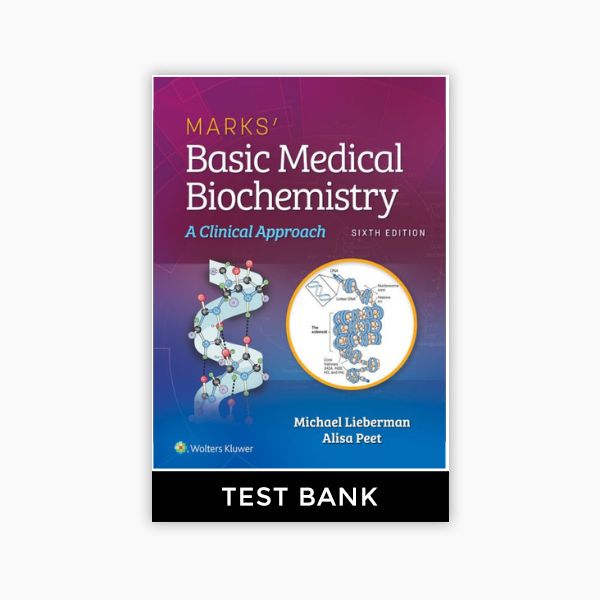




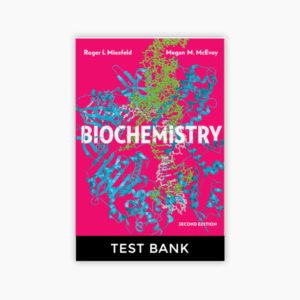
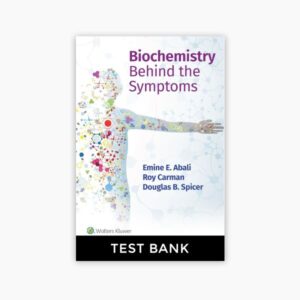
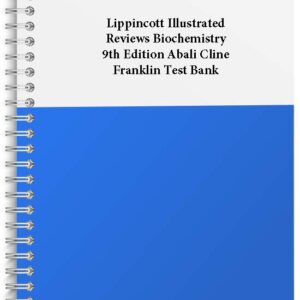
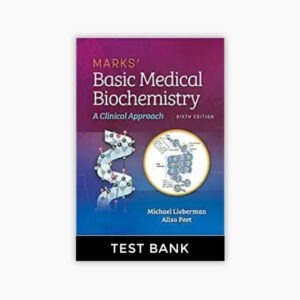
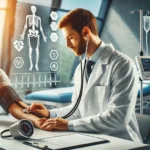
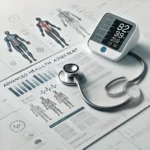

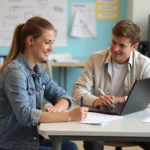

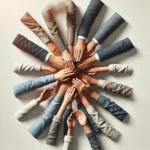



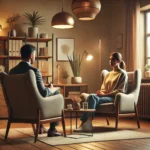
Reviews
There are no reviews yet.